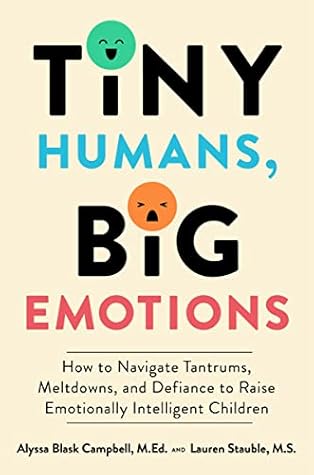More on this book
Community
Kindle Notes & Highlights
Read between
September 22 - September 27, 2024
Collaborative Emotion Processing is a way to teach and learn how to feel stuff with other people that builds long-term skills for emotional intelligence. CEP is an opportunity for adults to become aware of their own emotion processing, which in turn allows and supports children to develop emotion processing experience and skills.
It is the key to allowing children to experience challenges or hard emotions and to building the tools for how to navigate them while knowing they aren’t alone in the process.
want them to have the tools to navigate and process the inevitable hard stuff so they’re able to live a life that feels connected, compassionate, and curious.
components to emotional intelligence: self-awareness, self-regulation, empathy, motivation, and social skills.
Once we are aware of what’s happening inside—in other words, once we can allow and notice the feeling—then we can find the pause between our initial reaction and our response. Our initial thought and internal
is possible for someone to demonstrate self-regulation because they’ve suppressed feelings rather than processed feelings. Suppressed feelings don’t go away on their own; sometimes they explode (or implode) when we least expect it.
We don’t empathize with why someone is feeling something; we empathize with what they’re feeling. If you’ve ever felt disappointed before, you can empathize with someone else who is experiencing disappointment. Brené Brown says, “Empathy is feeling with people.”2 It’s hard because it requires us to let go of trying to cheer someone up when they’re suffering or trying to reason with them about why it’s not so bad or how it could be worse.
One of the best ways to do this is to apply Daniel Goleman’s work on motivation to our relationships with children. This has to do with how we talk to ourselves and children, how we celebrate our growth and theirs—no matter how small—by choosing encouragement and compassion over perfectionism, having a willingness to practice, and getting help when we need it.
According to attachment theory, in order for a child to feel safe and secure so they can take risks, explore their environment, and separate from a caregiver, they must feel confident in the caregiver’s ability to understand and meet their needs and keep them safe.
Secure attachment. In a secure attachment, a child feels safe, seen, secure, and soothed. The caregiver is emotionally available for the child’s experiences.
Avoidant attachment. In an avoidant attachment, a child feels disconnected or unseen. Their basic physiological needs are met, but their emotional needs are not. The caregiver may be dismissive of a child’s emotions, using phrases such as “you’re fine,” “no need to cry about that,” and “you don’t need to be upset.” The child learns that the adult is not comfortable with their hard emotions.
of Constructed Emotion by Barrett is: “You are not at the mercy of emotions that arise unbidden to control your behavior. You are an architect of these experiences. Your
Your brain is creating a story about what is happening in an effort to understand the situation.
tip: If you’re in a season with minimal sleep—such as pregnancy insomnia, newborn care, or professional and educational obligations that drain your resting time—reduce your expectations of the day-to-day as much as you can. It won’t always be like this; it’s an exhausting season that is temporary.
The connection-oriented phrase might sound like: “How is your show today? [Wait for an answer.] I wonder if you’ll tell me what happened at Daniel Tiger’s birthday party on the way to school this morning?” Then start the transition to school at least ten minutes earlier for a few weeks so there is time to process emotions that are related to the end of screen time and/or leaving home.
Keep in mind that it’s actually harder for you to change patterns in your behavior with children than it is for the children to change their patterns in response to your behavior.
because no one ever developed emotional intelligence sitting alone on a mountaintop.
someone who has suppressed their emotions can be easily mistaken as self-regulated or emotionally regulated.
Once we have a toolbox for recognizing what’s happening inside and what we are feeling, then we can observe the habits and patterns we have in place and decide if they are serving us. When we know how to do this for ourselves, we can teach children to notice these signs,


